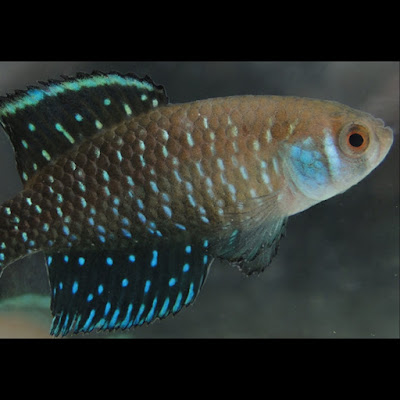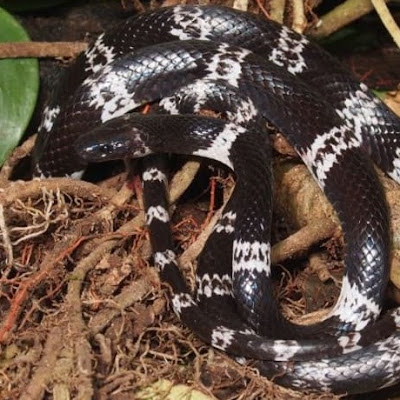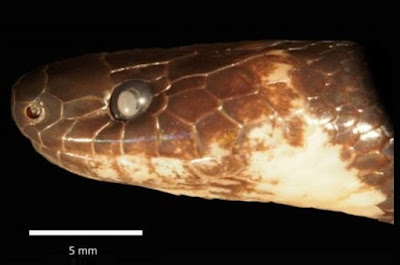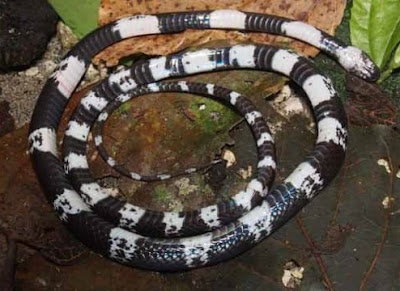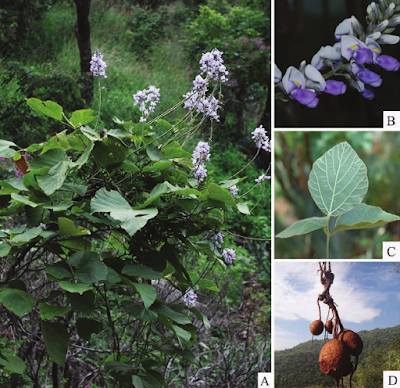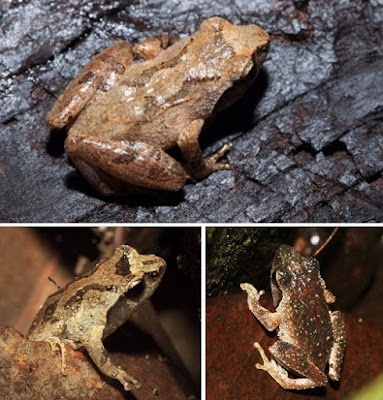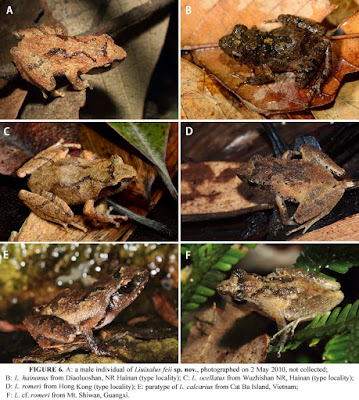[Most Recent Entries] [Calendar View]
Monday, June 19th, 2017
| Time | Event | ||||||||
| 4:32a | [Ichthyology • 2017] First Record of Blackfin Pearlfish Austrolebias nigripinnis (Regan, 1912) (Cyprinodontiformes, Cynolebiidae) from Brazil
Abstract Austrolebias Costa is a genus of annual fish inhabiting temporary wetlands in the Chaco-Pampasic region of southern Brazil, Uruguay, Paraguay, Bolivia and Argentina (Costa, 2006, Nielsen & Pillet, 2015, Alonso et al., 2016). Currently, about 45 species of Austrolebias are known (Costa, 2006, Volcan et al., 2014, Nielsen & Pillet, 2015), and of these, 24 occur in Rio Grande do Sul, the southernmost state of Brazil, distributed across the Rio Uruguay basin and the Patos-Mirim lagoon system and adjacent coastal areas (Volcan et al., 2015). Keywords: Pisces, Cyprinodontiformes, Cynolebiidae Matheus V. Volcan, Ândrio C. Gonçalves and Luis E. K. Lanés. 2017. First Record of Blackfin Pearlfish Austrolebias nigripinnis (Regan, 1912) (Cyprinodontiformes, Cynolebiidae) from Brazil. Zootaxa. 4254(3): 387–390. DOI: 10.11646/zootaxa.4254.3.9 | ||||||||
| 7:55a | [Herpetology • 2017] Lycodon sidiki • A New Species of Wolf Snake of the Genus Lycodon H. Boie in Fitzinger (Squamata: Colubridae) from the Aceh Province of northern Sumatra, Indonesia
Abstract Herein we describe a new species of Lycodon H. Boie in Fitzinger (Squamata: Colubridae) from Aceh Province, Sumatra. This brings the number of species known to occur on the Sunda Shelf to seven. The new species is readily diagnosed from the other congeners in the region by the lack of a preocular scale, the presence of keeled dorsal scales and a banded venter. It is superficially similar to L. butleri from the Malaysian Peninsula in coloration and to L. subcinctus in head scalation. Genetically, the new species is most similar to a group of species from Mainland Southeast Asia and China. We also note the presence of several deeply divergent lineages within Lycodon that may warrant the recognition as distinct genera. The genus is in need of a comprehensive molecular and morphological review. Keywords: Reptilia, Biodiversity, molecular phylogeny, Sunda Shelf, systematics
Diagnosis. This species of Lycodon is recognized by the presence of keeled scales, an elongate loreal scale that reaches the orbit, the absence of a preocular scale, an undivided anal scale, and a banded venter.
Etymology. This species is named in honor of Irvan Sidik, Indonesian herpetologist, a colleague, and friend, for his numerous contributions to the herpetology of the Sunda Shelf, and his promotion of scientific collections and the study of snakes. Elijah Wostl, Amir Hamidy, Nia Kurniawan and Eric N. Smith. 2017. A New Species of Wolf Snake of the Genus Lycodon H. Boie in Fitzinger (Squamata: Colubridae) from the Aceh Province of northern Sumatra, Indonesia. Zootaxa. 4276(4); 539–553. DOI: 10.11646/zootaxa.4276.4.6 Peneliti Indonesia Jadi Nama Spesies Ular Baru: Lycodon sidiki https://kumparan.com/utomo-priyambodo/pe | ||||||||
| 12:41p | [Botany • 2015] Pueraria grandiflora • A New Species (Fabaceae) from Southwest China
Abstract A new species, Pueraria grandiflora, (Fabaceae, Phaseoleae), is described and illustrated. It resembles Pueraria tuberosa, but differs in lobed leaflets, larger flowers, single or once branched inflorescences, and flowering and fruiting season. This species is only known from dry-hot valleys in Sichuan and Yunnan, and is rare and narrowly distributed. Key words: Dry-hot valley, Fabaceae, Phaseoleae, tuber
Pueraria grandiflora Bo Pan & Bing Liu, sp. nov. Etymology: The species epithet refers to the large flowers of this species, the largest within the genus to date. Bo Pan, Bing Liu, Zhi-Xiang Yu and Yong-Qiong Yang. 2015. Pueraria grandiflora (Fabaceae), A New Species from Southwest China. Phytotaxa. 203(3); 287–291. DOI: 10.11646/phytotaxa.203.3.8 | ||||||||
| 12:51p | [Herpetology • 2015] Liuixalus feii • A New Species of the Genus Liuixalus (Anura: Rhacophoridae) from southern China
Abstract A new tree frog species of the genus Liuixalus was described from Heishiding Nature Reserve, Guangdong Province, China based on a combination of morphological characters and molecular phylogenetic analyses. Liuixalus feii sp. nov. is distinguished from its congeners by a combination of following characters: small size (SVL 16.2–17.6 mm in adult males and 18.0–18.7 mm in adult females); snout obtusely pointed; tympanum distinct, about half size of eye diameter; nostril closer to eye than to the tip of snout; fingers free of webbing; toe III longer than toe V; toes weakly webbed; tibiotarsal articulation reaching the naris or loreal; dorsal skin smooth and scattered with fine granulars; a subtle longitudinal median ridge present on dorsum; weak skin folds present on dorsal surface of body and thighs; supratympanic fold distinct and curved; ventral surface dull white with more or less irregular dark spots; iris bicolored. The new species appears to be forest-dependent and to date has only been found on the forest floor in primary forests at elevations between 350–800 m. Based on our molecular analyses, we consider Liuixalus catbaensis as a junior synonym of L. calcarius. Thus, with the description of the new species, the genus Liuixalus hitherto contains five recognized species, four of which are endemic to China. Keywords: Amphibia, Rhacophoridae, Liuixalus, new species, taxonomy, China Etymology. The specific epithet “feii” is a patronymic noun in the genitive singular; derived from the name of Professor Liang Fei of the Chengdu Institute of Biology, Chinese Academy of Sciences, China, in recognition of his long-term great contribution to the advancement of amphibian research in China. For the common name, we suggest “Fei’s Small Tree Frog” in English, “Fei Shi Xiao Shu Wa” in Chinese. Jian-Huan Yang, Ding-Qi Rao and Ying-Yong Wang. 2015. A New Species of the Genus Liuixalus (Anura: Rhacophoridae) from southern China. ZOOTAXA. 3990(2); 247–258. DOI: 10.11646/zootaxa.3990.2.5 |
| << Previous Day |
2017/06/19 [Calendar] |
Next Day >> |
